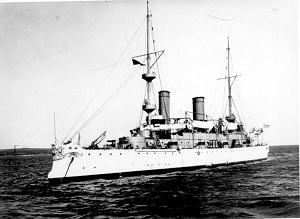Penn's Landing: Page 3
WORKSHOP ON THE WATER
Another offering at the museum is Workshop on the Water. Classes are offered for locals would like to try their hand at boatbuilding. Instructors give hands-on lessons on the construction of skiffs and sailboats. Students may learn how to make a catboat (a pleasure boat of the last century) or a railbird skiff (a flat-bottomed boat used for hunting in marshes). Other courses teach model-making and paddle-making. Visitors to Independence Seaport Museum can observe these traditional boatbuilding classes.
KEEP WALKING SOUTH
Back outside, the brick pathway juts out into the water at this point. One continues walking past a small marina and finally the walk dead ends onto some brick benches across from the Chart House Restaurant and a ship called the Spirit of Philadelphia with its registry listed as Norfolk, Virginia. One of the best views of the city can be had from this point. Christ Church, the Philadelphia Customs House, I.M. Pei's Society Hill Towers, and the Benjamin Franklin Bridge all seem to sparkle more resplendently when seen from the water. Return from the dead-end to the museum.
WORLD SCULPTURE GARDEN
Dominating this grassy two-acre garden is another Venturi, Scott Brown and Associates project. An obelisk celebrating the quincentennial (500 years) of Columbus's arrival in America is both a work of art and a source of information. This piece unabashedly celebrates the Genoan as a hero. Inscribed on the base are some of his traits — Explorer, visionary, navigator, cartographer.
Here, too, is Sphere, a 16-ton, 8-foot-in-circumference monolithic stone obtained from Costa Rica. Anthropologists aren't sure if the sphere, one of many found at a Costa Rican site, was used for ritual or scientific purposes. Regardless, there is something irresistible about this rock. Other items in the sculpture garden are a totem pole from Canada, a cow sculpture from India, and a bronze statue of William Penn, age 38, in 1682.
From here we continue south to the National Naval Shrine. At the foot of Spruce Street, two symbols of America's nautical past have found a home port in Philadelphia.
THE U.S.S. OLYMPIA

U.S.S Olympia in 1902
"For the past few months we have tried to get the support of folks around this great nation who take pride in their American Heritage to help us secure the future of this Philadelphia historic landmark known as USS Olympia C6." You can help: Friends of Cruiser Olympia
"You may fire when you are ready, Gridley." Thus Commodore Dewey ignited the 1898 Battle of Manila Bay from the bridge of the Olympia. Seven-and-a-half hours later the Spanish fleet in the Philippines had been destroyed and the U.S. had arrived as an imperial power.
The Olympia, built in 1892, was one of America's first steel. She became the flagship of the North Atlantic Squadron, and protected American interests in many foreign countries. During the First World War, the Olympia served as an escort ship in the Atlantic Ocean. The historic ship's last assignment, in 1921, was bringing the body of the Unknown Soldier back from Europe and carrying him to his final resting ground at Arlington National Cemetery.
One is struck by the amount of fine woodwork used in the officers' cabins and the other amenities of civilization that are found aboard the Olympia. The spacious Admiral's Quarters features fine cabinets and crystal wine glasses. Walking about, it seems one is walking on a cruise ship rather than a battleship. A city in miniature, a swabbie could visit a barbershop, dentist, or the ship's store, while on board. The store is recreated to look as it did during WWI and is stocked with vintage items.
The ship's 26 cannons and 6 torpedo tubes belie any cruise-ship notions, however. When in fighting shape, the great ship was home to a crew of 440 men and 34 officers. Be sure to go below and see the remarkable engine room.
We forward to you a note from a visitor to these pages, a long-time devotee of restoration and whose wife works for the Smithsonian, who said, "The condition of this important ship is deplorable! The historic vessel needs a major overhaul and restoration judging from what I saw." He also noted that as the ship is a self-guided tour, more signs were needed to make the visit more meaningful. We have been informed (May 1996) that the Independence Seaport Museum is now responsible for the ship and has received two sizeable grants towards refurbishing the Olympia and the Becuna.



